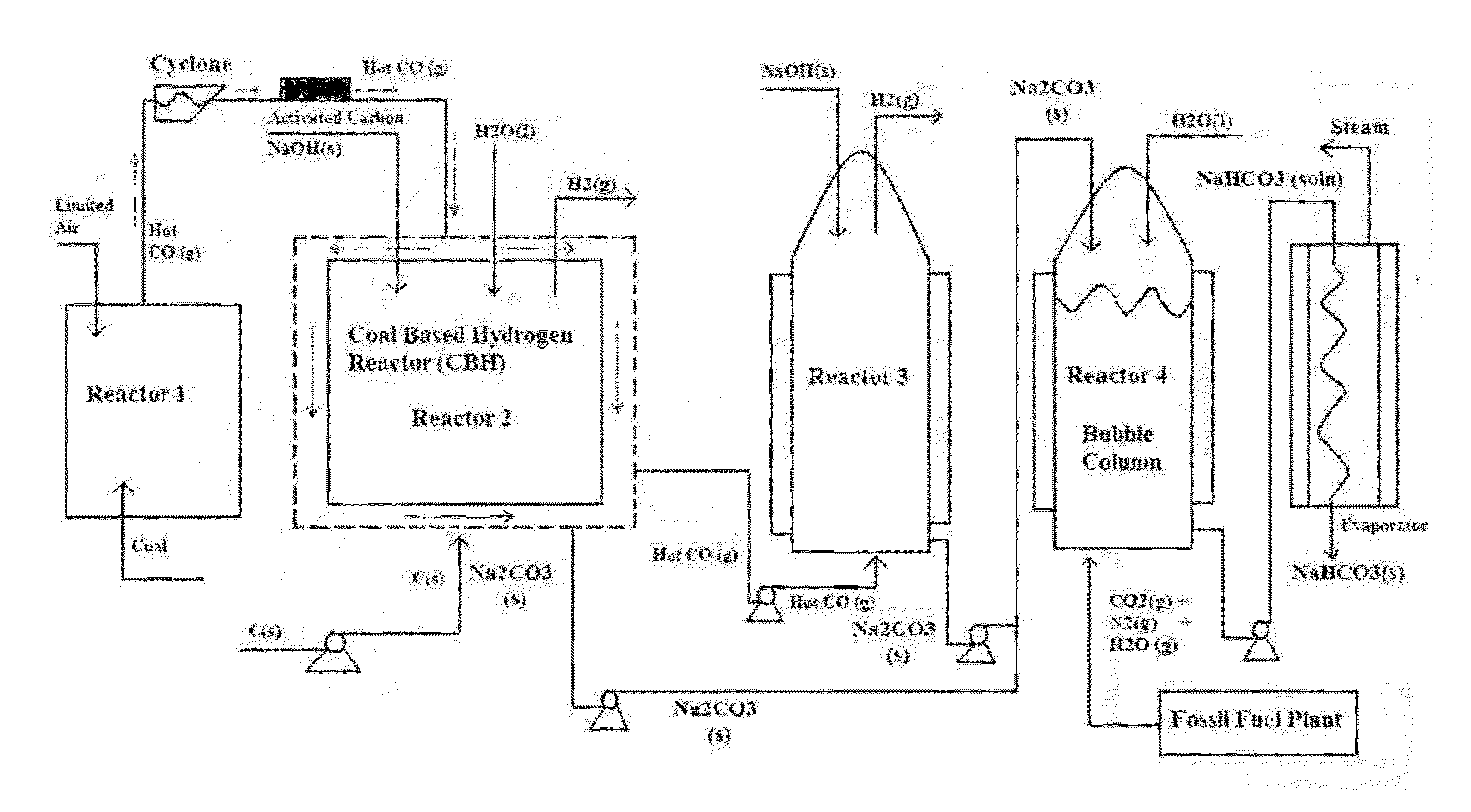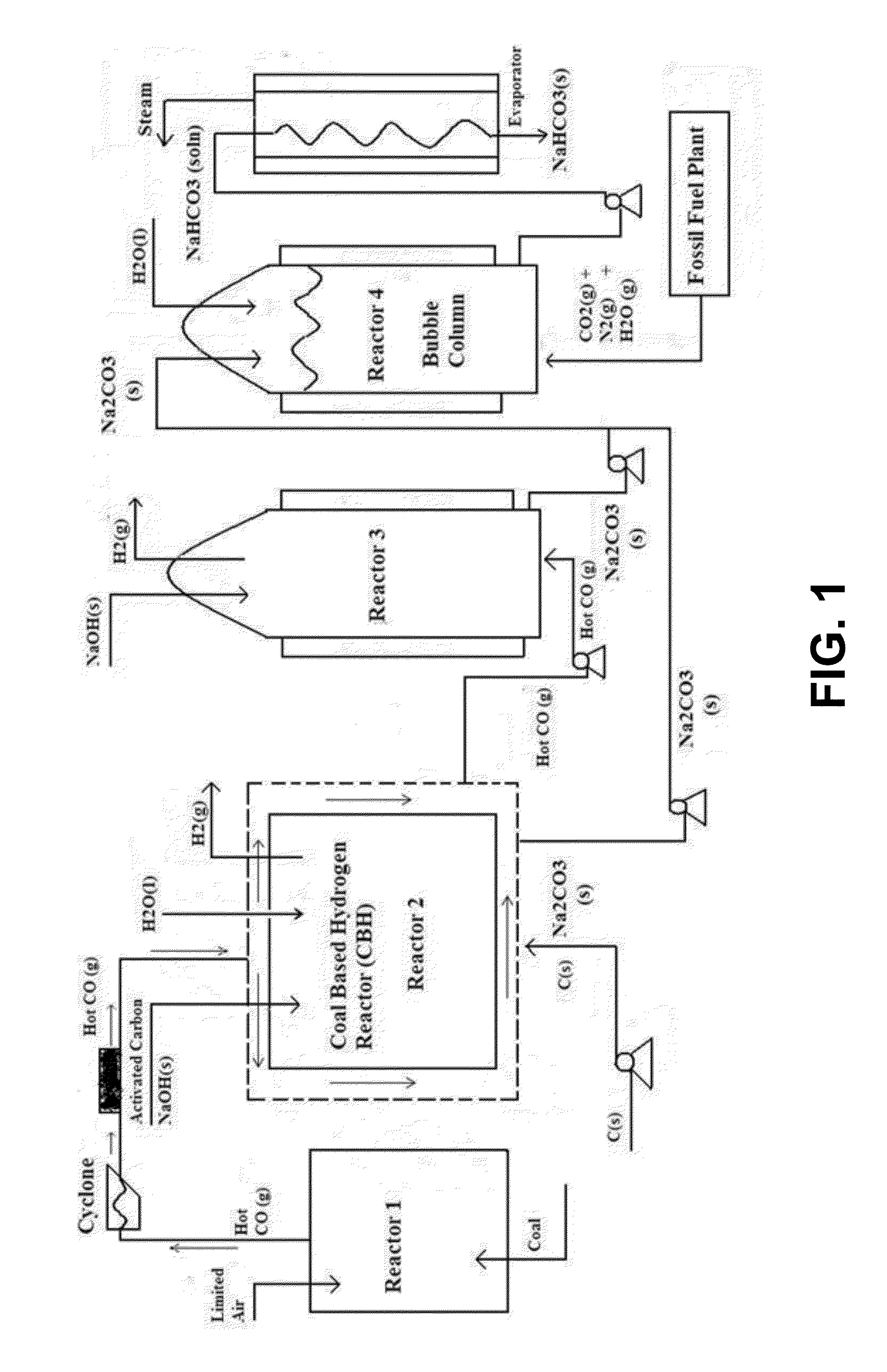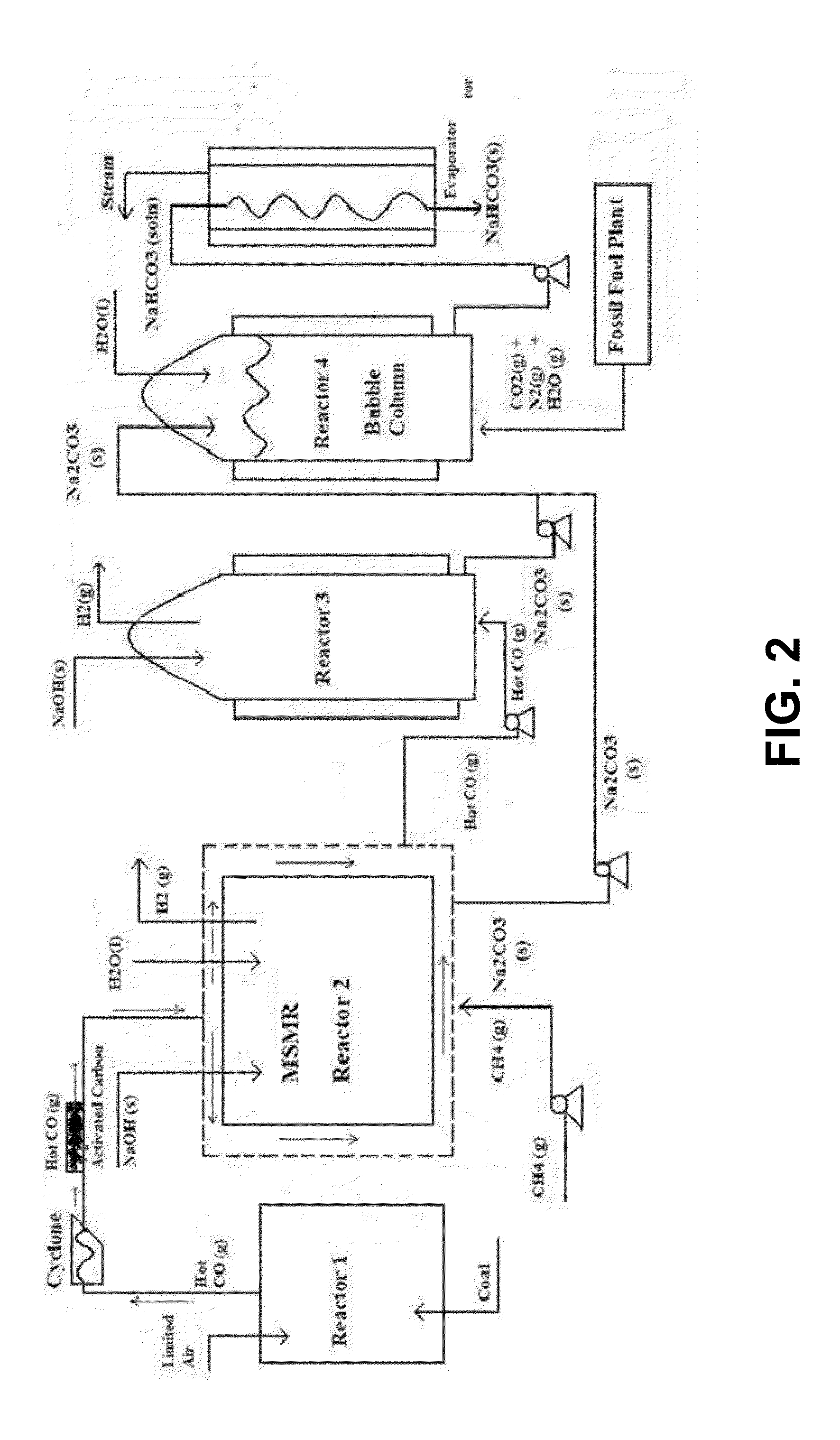Carbon Sequestration in Municipal Solid Waste to Energy Plants
a technology of carbon sequestration and energy plants, applied in separation processes, emission prevention, combustion types, etc., can solve the problems of significant carbon emissions, waste of resources, waste of resources, etc., and achieve the effect of environmental clean and economically viable use of hydrogen or any other material to produce energy
- Summary
- Abstract
- Description
- Claims
- Application Information
AI Technical Summary
Benefits of technology
Problems solved by technology
Method used
Image
Examples
Embodiment Construction
[0038]For the purposes hereof, “solid waste” or “municipal solid waste” (MSW) is shall be defined as consisting of, without limitation, food, kitchen waste, green waste, paper waste, glass, bottles, cans, metals, plastics, fabrics, clothes, batteries, construction and demolition waste, dirt, rocks, debris, electronic appliances, computer equipment, paints, chemicals, light bulbs and fluorescent lights, fertilizers, and medical waste.
[0039]For the purposes hereof, “refuse derived fuel” (RDF) is a combustible fuel commodity (e.g., without limitation, hydrogen, methane, methanol, ethanol or synthetic fuels) created by the treatment of solid waste.
[0040]For the purposes hereof, a “municipal solid waste plant” is a solid waste treatment plant involving the waste-to-energy process of creating energy or a combustible fuel commodity from the incineration of MSW or the indirect combustion of MSW through thermal reactions (e.g., without limitation, gasification or steam-fuel-reformation).
[004...
PUM
 Login to View More
Login to View More Abstract
Description
Claims
Application Information
 Login to View More
Login to View More - R&D
- Intellectual Property
- Life Sciences
- Materials
- Tech Scout
- Unparalleled Data Quality
- Higher Quality Content
- 60% Fewer Hallucinations
Browse by: Latest US Patents, China's latest patents, Technical Efficacy Thesaurus, Application Domain, Technology Topic, Popular Technical Reports.
© 2025 PatSnap. All rights reserved.Legal|Privacy policy|Modern Slavery Act Transparency Statement|Sitemap|About US| Contact US: help@patsnap.com



